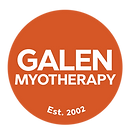Why is stretching important to observe?
- Julia Robertson
- Nov 14, 2022
- 3 min read
Updated: Mar 16, 2023
When an animal stretches after sleep or rest, it has always indicated to me a good level of wellness; this type of stretch has a name, it is called ‘pandiculation’ and is an innate action of many mammals, including dogs. The pandiculation stretch eases our body into gentle movement and wakes up our muscles after a night's sleep.
What Galen Motherapists have observed over the years is that most dogs' pandiculation stretch will only include their forelegs, and not their hind legs. This lack of hind leg extension has proved a reliable indication of lower back and/or hind leg inflexibility, and therefore an important indication of discomfort. This is why this question features on the Galen Comfort Scale© ‘Does your dog find it difficult to stretch out both their back legs behind them?’
Like us, it is not customary for a dog to stretch during the day unless they feel specific areas of tension. Have you ever experienced that horrible nagging pain that arises in-between your shoulder blades, possibly aggravated by working with a bad posture at a computer? You may have tried to soothe the congested area by stretching and extending your arms around the front of your body. This type of muscle releasing stretch is very different to the pandiculation stretch we would do when we first wake up.
Within the canine world, stretching during the day has many different behavioural connotations, it could be viewed as appeasement, stress or it could be something a dog does to ease physical or myofascial tension (muscle and fascia).

A dog that stretches their front legs during the day could indicate they are feeling tight over their shoulders, and this could perhaps be due to tension within the latissimus dorsi muscle (see diagram). This muscle in particular can become incredibly irritated if a dog is unbalanced or compensating for discomfort in their pelvic region, as it basically connects their ‘front end to their back end’. Likewise this compensatory pattern could affect other muscles within a dog’s shoulders and neck and a front leg stretch could help to give temporary relief to these areas.
At Galen Myotherapy we specialise in successfully treating chronic or ongoing muscle discomfort. Throughout our 20+ years of experience, we have found that so often dogs suffering from chronic lameness, slowing down, or premature ageing, is originating from pain or discomfort in the pelvic region, or their hind quarters. A common compensatory, bracing pattern which inhibits a good hind limb stretch is caused by a shortening of the psoas or iliopsoas muscle group. These muscles are a strong combination of two muscles that are also called the deep hip flexors and their role is to primarily contract and flex the hip through the sacroiliac region and the hip joint.


If a dog is injured or painful within their hind quarters, these deep hip flexors can shorten due to the physiological changes of the myofascial forces, and by doing so, they become less elastic and flexible, physically preventing the dog from stretching or extending their legs out behind them.


Have you observed your dog stretching recently? When do they stretch, after sleep or during the day? Do they stretch their hind limbs as well as their forelimbs? Your observations could indicate that your dog has taken on a different posture, which could be inhibiting their movement and comfort.
Galen Myotherapist’s are specialists in canine postural analysis and can help influence positive postural and mobility changes through our Positive PACT (choice-led) treatment protocol. If you notice a change in your dog’s stretching, talk to us to find out how we can help improve their comfort.
Further reading
Pandiculation is the involuntary stretching of the soft tissues, which occurs in most animal species and is associated with transitions between cyclic biological behaviors, especially the sleep-wake rhythm (Walusinski, 2006)
Pandiculation appears to reset the central nervous system to the waking state after a period of sleep and prepare the animal to respond to environmental stimuli (Walusinski, 2006).
Bertolucci LF. Pandiculation: nature's way of maintaining the functional integrity of the myofascial system? J Bodyw Mov Ther. 2011 Jul;15(3):268-80. doi: 10.1016/j.jbmt.2010.12.006. Epub 2011 Jan 14. PMID: 21665102.
It is argued here that pandiculation might preserve the integrative role of the myofascial system by (a) developing and maintaining appropriate physiological fascial interconnections and (b) modulating the pre-stress state of the myofascial system by regularly activating the tonic musculature.
SUPPORTING YOU TO HELP YOUR DOG AT HOME
Our Distance Support Programmes provide 1:1 professional guidance for you as an owner, enabling you to help your dog at home. You will be supported remotely through the programme by your own dedicated and experienced Galen Myotherapist. Find out more here>




